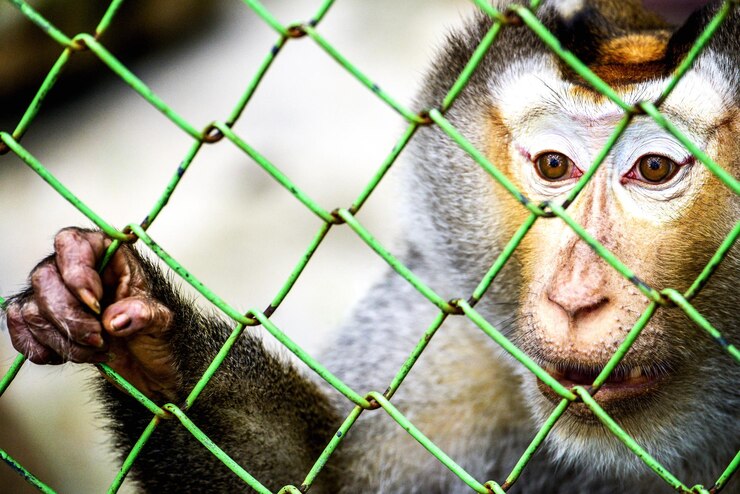As urbanization expands and cities continue to merge with wildlife habitats, one of the growing challenges residents face—especially in India and other tropical countries—is the intrusion of monkeys into homes, apartments, and offices. These intelligent and agile creatures can cause significant disturbances, property damage, and even pose a risk to human safety. This is where monkey safety nets come into play, offering a practical, humane, and cost-effective solution.
What Are Monkey Safety Nets?
Monkey safety nets are specially designed mesh barriers made from high-quality, UV-stabilized materials such as nylon or HDPE (High-Density Polyethylene). These nets are installed in open areas such as balconies, windows, terraces, rooftops, and duct spaces to prevent monkeys from entering while still allowing airflow and sunlight. They act as an invisible shield that maintains aesthetic appeal without compromising safety.
Why Are Monkey Safety Nets Needed?
1. Prevent Monkey Intrusion
Monkeys are known to enter urban homes in search of food. They often jump from tree branches, electric wires, or nearby buildings into open balconies or terraces. Monkey safety nets block these entry points effectively without harming the animals.
2. Ensure Child and Elderly Safety
Families with children or elderly members are especially vulnerable. An unexpected encounter with a monkey can lead to panic, injury, or falls. Safety nets serve as a physical barrier, giving peace of mind to all age groups.
3. Protect Household Items
Monkeys tend to be destructive—they can damage plants, tear clothes, break pots, steal food, or scatter garbage. Installing monkey nets ensures your living space stays clean and organized.
4. Avoid Monkey Bites and Disease
Monkeys are wild animals and may bite or scratch when feeling threatened. This can lead to serious infections or diseases like rabies. Keeping them out of reach with a secure safety net reduces the risk of direct encounters.
Key Features of Monkey Safety Nets
- High Strength and Durability: Most monkey nets are made of high-tensile material with excellent resistance to tearing and breaking, even under the weight or force of multiple monkeys.
- UV-Stabilized: The nets are resistant to UV radiation, making them long-lasting even under constant exposure to sunlight.
- Weatherproof and Rust-Free: Frames and hooks used in installation are often made of stainless steel or rust-proof materials that withstand rain, humidity, and heat.
- Invisible or Transparent Options: For those concerned about aesthetics, transparent or black nets are available which blend with building exteriors and don’t obstruct the view.
- Custom-Fit Design: Nets can be custom-cut and fitted according to the layout of your balcony, window, or open space.
Common Installation Areas
- Balconies
- Open Windows
- Terrace edges
- Ventilation areas
- Staircases
- School and college buildings
- Hospitals and offices in green areas
Professional net installers ensure that the net is tightly secured using strong anchors, corner clamps, and hooks so that monkeys cannot find a way to tear or sneak through.
Types of Monkey Safety Nets
Depending on your need and location, you can choose from:
- Residential Monkey Nets: For apartments and independent houses.
- Commercial Monkey Nets: Used in resorts, hotels, and hospitals in monkey-prone zones.
- Agricultural Monkey Nets: Protect farmlands and orchards from monkey attacks on crops.
Benefits of Installing Monkey Safety Nets
- Non-lethal and Eco-Friendly: Unlike electric fences or traps, monkey nets are a humane solution. They do not harm or disturb the natural behavior of monkeys.
- Low Maintenance: Once installed, they require minimal upkeep. A basic cleaning every few months is enough.
- Long-Term Cost Saving: Preventing damage to property and avoiding hospital visits caused by monkey encounters can save a lot in the long run.
- Quick Installation: Professional teams can usually install a net within a few hours with minimal disturbance.
Monkey Safety Nets vs General Safety Nets
While general bird or pigeon nets may offer basic protection, monkey nets are reinforced with stronger materials and thicker mesh sizes to withstand greater weight and force. They also require a more secure anchoring system. Using bird nets to block monkeys is not recommended as monkeys can easily tear or bypass them.
Tips Before Installation
- Assess Monkey Activity: Understand the behavior and frequency of monkey visits in your area.
- Choose the Right Net Material: Nylon is common, but HDPE is stronger for heavy-duty areas.
- Professional Consultation: Always go for expert installers who offer a warranty and after-service.
- Secure Trash and Food: Nets help, but also avoid leaving food waste in open areas to discourage monkey presence.
Maintenance and Safety Checks
- Inspect the nets every 6–12 months for wear and tear.
- Ensure hooks and clamps are tightly fitted and rust-free.
- Clean dust or bird droppings to maintain hygiene.
- Call professionals if any part of the net is damaged.
Conclusion
With increasing human-animal conflict in urban landscapes, monkey safety nets have become a vital necessity—especially in cities with large monkey populations. These nets offer a safe, reliable, and ethical way to protect families, pets, and properties without disturbing wildlife. Whether you’re in a metro apartment, a school near a forest zone, or a hospital facing frequent monkey visits, installing a monkey net is a one-time investment for long-term peace of mind.

